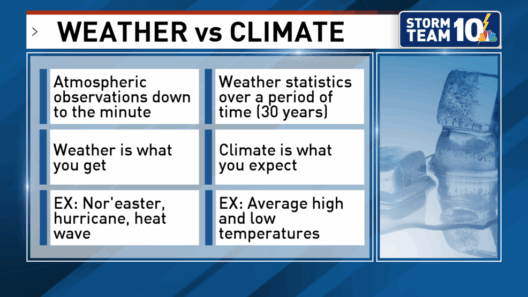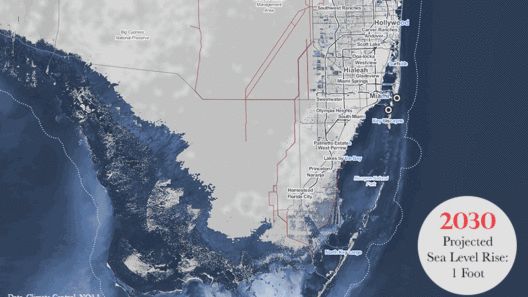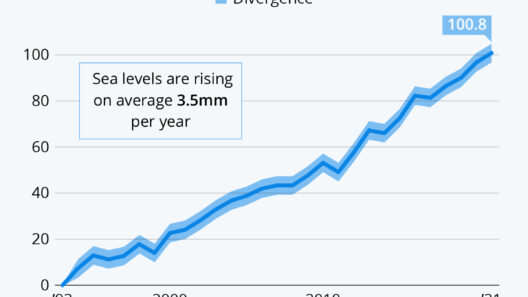As sea levels continue to ascend due to climate change, New Zealand finds itself at a critical crossroads. The nation, renowned for its stunning coastlines and vibrant ecosystems, is poised to face a multitude of challenges stemming from this global phenomenon. Have you ever contemplated what this rising tide means for our picturesque shores and coastal communities? What adjustments will New Zealand need to make to adapt to this impending reality? These questions provoke thoughts on the environmental, social, and economic implications of this daunting issue.
Understanding these challenges begins with examining the projections for sea-level rise. Scientists estimate that the seas could rise between half a meter to over two meters by the end of this century. This stark reality is compounded by the precarious geography of New Zealand, which consists of numerous low-lying coastal regions and islands. Thus, the implications of rising sea levels permeate various facets of New Zealand’s identity, from its stunning landscapes to its densely populated urban centers.
The pristine beaches of Auckland and the vibrant coastal communities of Christchurch are not just idyllic vacation spots; they are vital ecosystems and crucial economic hubs. However, increasing sea levels pose significant threats to infrastructure, local economies, and the natural habitats that define these regions.
Coastal Erosion: The Crumbling Shorelines
One of the most visible impacts of rising sea levels is coastal erosion. As the tides creep inward, they are set to consume additional land, threatening beaches and coastal structures. This phenomenon has already been witnessed in various regions across New Zealand, where homes, roads, and recreational spaces are slowly disappearing. For example, the notorious erosion along certain parts of the Hawke’s Bay is reshaping real estate and community planning.
The mechanics of erosion are complex, combining the relentless power of waves, storm surges, and rising tides. But the effects are straightforward: property values decline, infrastructure becomes vulnerable, and communities face displacement. These coastal zones have to confront the inconvenient truth: adapt or succumb to nature’s forces.
Moreover, the loss of coastal land is not merely a matter of economics; it threatens cultural heritage too. Many indigenous communities hold deep connections to particular coastal landscapes, which are seen as integral to their identity and spiritual ties. As these areas erode, there exists a danger that important cultural sites may be lost forever, dissipating irreplaceable aspects of New Zealand’s rich historical tapestry.
Urban Planning and Infrastructure Resilience
How can urban planners and policymakers prepare for the impending rise of the oceans? The need for resilience in infrastructure is paramount. Cities like Wellington are proactively investigating comprehensive coastal management strategies. Investing in sea walls and other protective structures may safeguard coastal inhabitants, but these measures come with hefty price tags and finite effectiveness. Engaging in regular assessments will be crucial to ensure that strategies evolve as conditions change.
Additionally, as available land becomes scarcer, zoning laws may need recalibration. Communities may be required to reconsider building and land development practices. Resilient architecture plays a vital role as well. Designing homes and infrastructure that can withstand the challenges of rising tides and storm surges is essential for ensuring safety and longevity.
A proactive, well-researched approach can mitigate potential catastrophes while fostering sustainable development. But when will we shift gears from reactive to proactive? Timing is critical; the sooner the necessary steps are taken, the better prepared New Zealand will be to confront this reality.
Ecosystem Disruption: A Tidal Wave of Change
The ecological ramifications of rising sea levels extend well beyond human interests. Coastal ecosystems, such as mangroves and wetlands, are particularly sensitive to changes in their environment. Migratory patterns of marine life may also be disrupted, leading to shifts in species distribution. As these habitats succumb to increased salinity and changing tidal zones, the biodiversity that defines New Zealand could be at stake.
Moreover, the rising oceans could lead to saltwater intrusion in freshwater systems, jeopardizing agriculture and drinking water supplies. Regions relying on freshwater for farming may discover their crops suffering from increased salinity levels, affecting food production. In a nation renowned for its agricultural prowess, the threat to food security can raise alarms about local and national stability.
Community Empowerment and Engagement
No change can take place without the community’s active participation. How will grassroots movements influence climate resilience efforts? Coastal communities must be at the heart of understanding and addressing this phenomenon. Public awareness campaigns can foster understanding among citizens about adapting to the reality of rising sea levels, thereby encouraging communal action.
Partnering with local organizations, research institutions, and indigenous groups can create a robust framework for engaged decision-making. Educating citizens about the vulnerabilities their communities face and empowering them to take an active role can facilitate long-term solutions while preserving cultural heritage.
To conclude, the challenge of rising sea levels presents New Zealand with a quintessential test of resilience, adaptability, and innovation. While the threats are real and immediate, a proactive approach towards planning, education, and community engagement can fortify this beautiful nation’s coastal regions. Engaging with these challenges not only preserves the natural and cultural landscape but also ensures that future generations can revel in the splendor that New Zealand has to offer.






